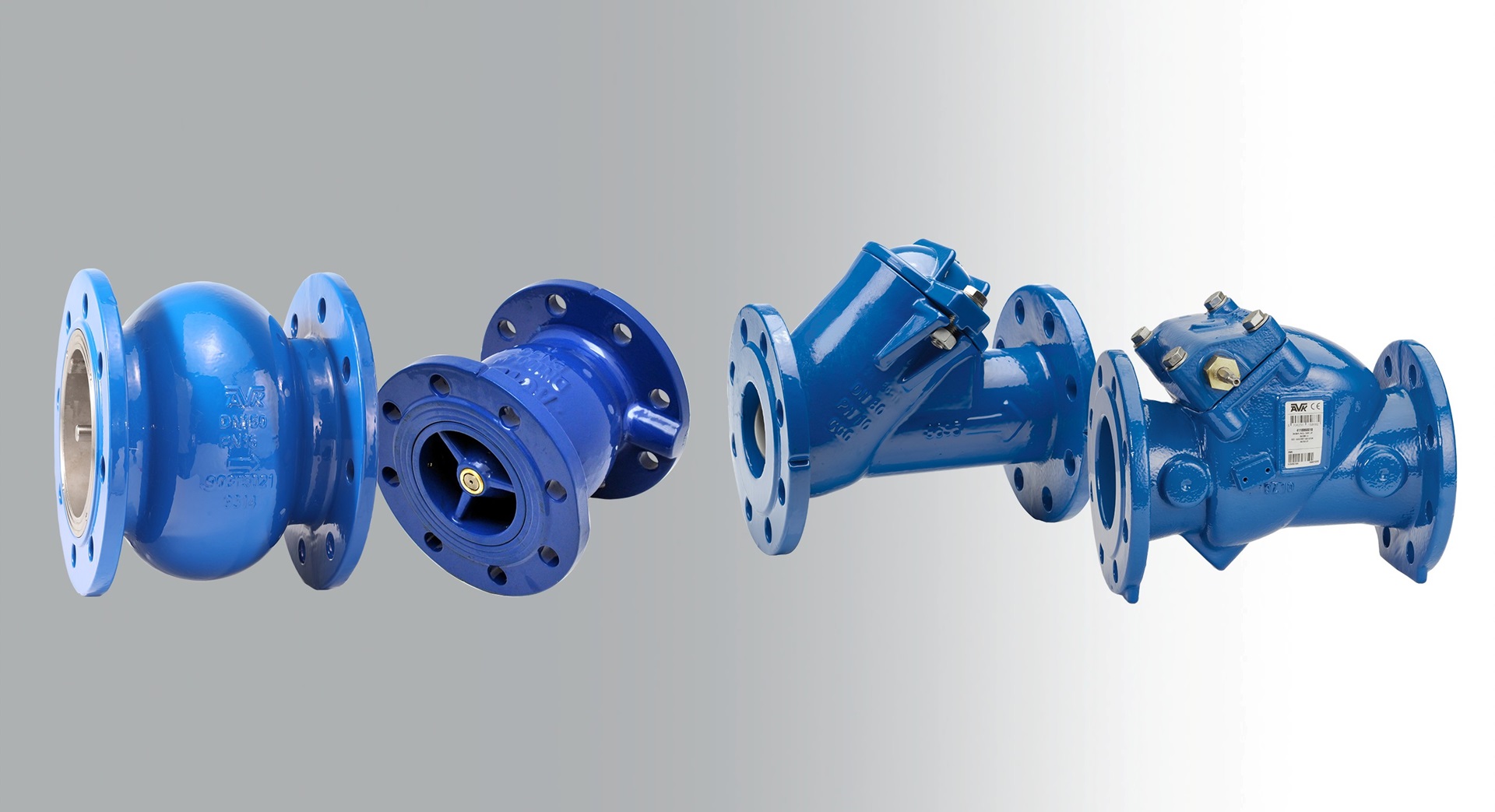
Check valve
Check Valves for irrigation
What is a Check Valve?
A check valve is a one-way valve that allows fluid to flow freely in one direction while blocking reverse flow to protect pipelines, valves, and pumps. Without a check valve, reverse flow can cause water hammer, a powerful surge that can damage pipes and components. By preventing backflow, check valves help maintain system integrity and prevent potential damage.
Common Applications
Check valves are commonly installed on the outlet side of pumps to prevent backflow. For example, in centrifugal pumps—which are not self-priming—check valves are crucial for keeping water in the pipes. They are also used in HVAC systems in large buildings to ensure coolant does not flow back down the system when pumped up multiple stories. Choosing the right check valve involves balancing cost, pressure loss, and safety. While a higher safety margin can increase pressure loss, it’s essential to evaluate each system individually. Factors like the risk of water hammer, acceptable pressure loss, and financial impact should be considered to ensure proper protection and cost-effectiveness.
Impact of water hammer
In a pumped system, water is elevated from a lower level to a higher one using a pump. During pump operation, fluid flows in a single direction. When the pump shuts off, fluid flow diminishes and eventually ceases. As the pipeline ascends, any residual fluid will naturally flow back down the pipe. To prevent this reverse flow from re-entering the pump, well, or intake, a check valve is installed.
If a pump halts and reverse flow begins before the check valve has completely closed, the incoming flow can force the valve flap to slam shut abruptly. This sudden closure of the valve can instantly stop the reverse flow, leading to a phenomenon known as water hammer. This event produces loud banging noises, which result not from the valve seating but from the pipe expanding under the sudden pressure change. The resulting pressure surge can cause significant damage, including pipe cracks, bursts, cavitation, and implosion due to vacuum pressures.
Types of Check Valves
Swing Check Valves
AVK swing check valves are designed for straightforward maintenance and can be installed in either horizontal or vertical orientations. These valves utilize a disc that pivots on a hinge or shaft. When fluid flows in the forward direction, the disc moves away from its seat to permit flow. When the flow ceases, the disc swings back onto the seat, preventing reverse flow. The disc’s weight and the reverse flow contribute to the valve’s shut-off performance.
Ball Check Valves
AVK ball check valves are engineered with a self-cleaning mechanism. The ball rotates during operation, which helps prevent impurities from becoming lodged on it. The standard ball features a metal core lined with NBR rubber, with the rubber’s hardness carefully calibrated to avoid the ball sticking in the seat. For applications involving abrasive substances or where different ball weights are required to minimize noise and water hammer, polyurethane balls are used. The valve’s smooth, full bore design ensures unobstructed flow, minimizes pressure loss, and prevents deposit buildup that could hinder a tight seal.